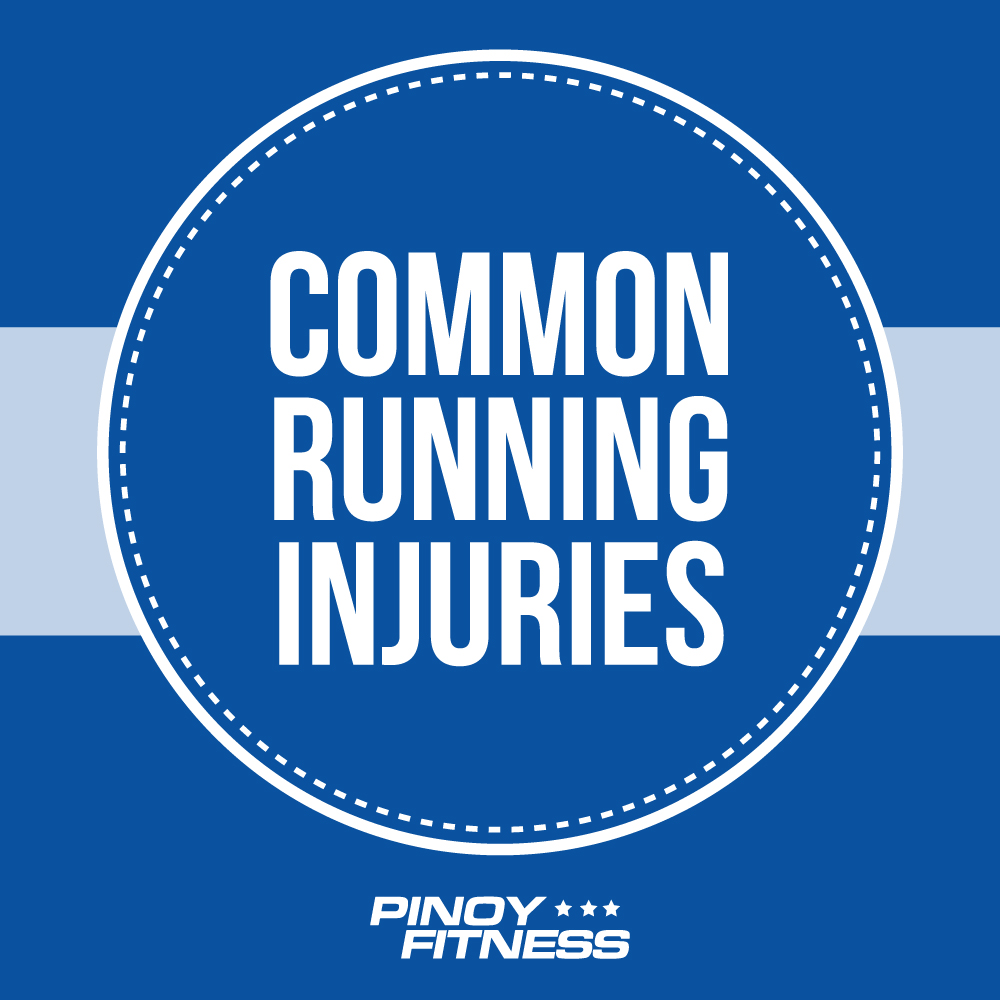
7 Common Running Injuries and What You Can Do About Them
Running for years, or even a just a couple of months, may lead to injuries. And if not treated as soon as possible, these injuries could keep you sidelined for a long time.
Here are 7 of the most common running injuries, along with some of the things you can do to treat and avoid them.
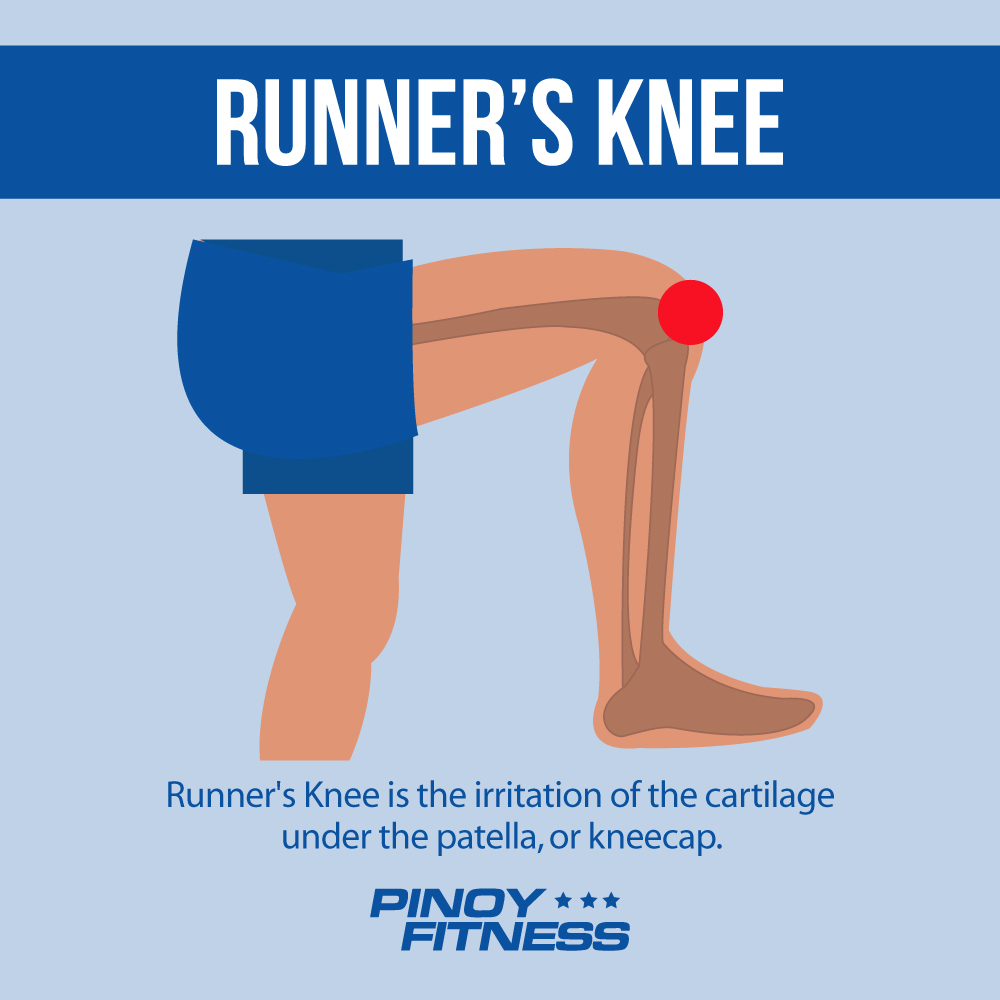
1. Runner’s Knee
What is it: Runner’s Knee is the irritation of the cartilage under the patella, or kneecap. It usually strikes runners during or after long runs, after they’ve been sitting for a long time, or while they’re going down hills or stairs.
Stop if: You feel pain on the inside or outside of your knees as soon as you wake up, and it doesn’t go away.
Treat it: Ice the affected area during the early stages of your injury.
Add cycling to your list of activities, as this can help you recover faster by strengthening the quads. Elliptical training and swimming are other knee-friendly activities.
If you still want to run, run every other day, and only up to the point where you don’t feel any pain. Avoid running downhill, which can make your knees even more painful.
Avoid it: Lateral side steps will strengthen weak hip and glute muscles. Place a resistance band just above your ankles or your knees. Separate your feet and bend your knees to a slightly crouched position. Stay in this position and walk sideways 10 to 15 steps, keeping your feet straight and your upper body still. Then reverse directions.
Uphill running can also strengthen your glutes, which then help control hip and thigh movement.
Shorten your stride length and land with knees slightly bent. It’s also important to stretch your hip flexors.
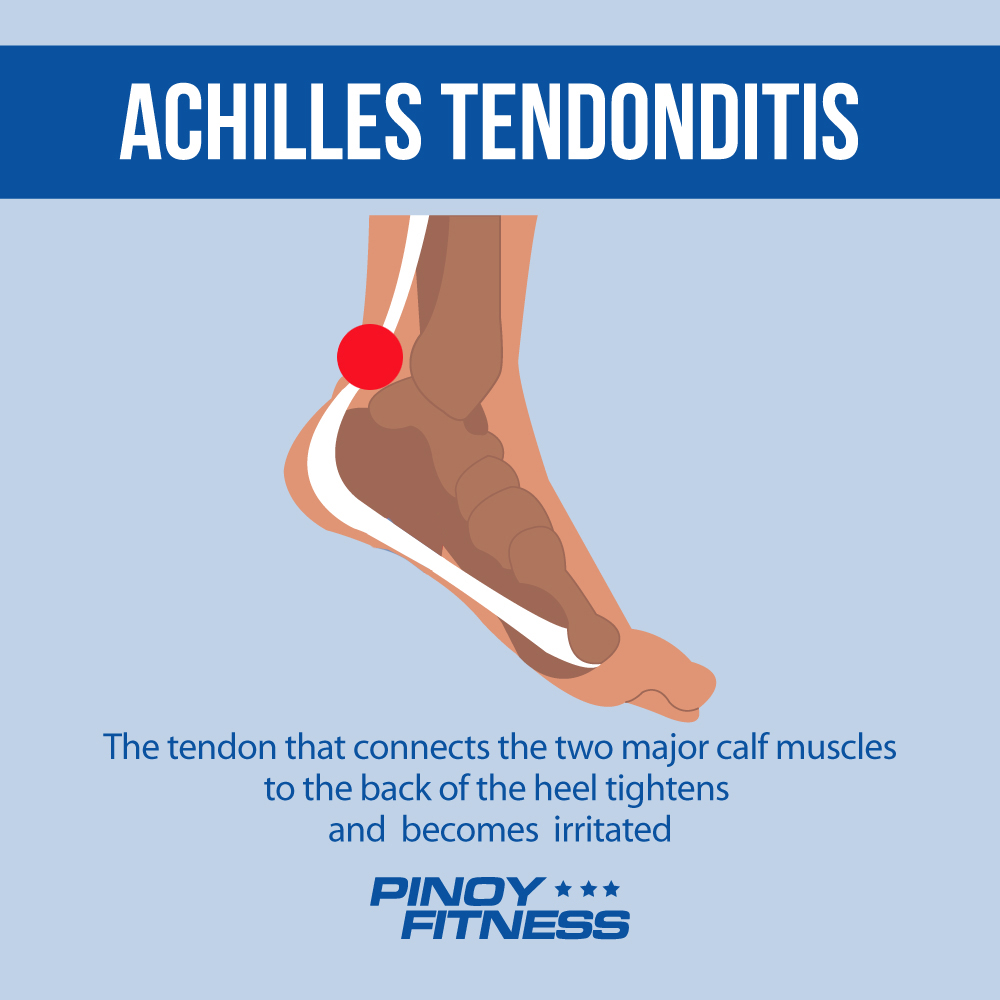
2. Achilles Tendonitis
What is it: The Achilles tendon connects the two major calf muscles to the back of the heel. If there’s too much stress, the tendon tightens and becomes irritated, causing tendonitis.
Stop if: There’s severe pain and swelling above your heel, even when you’re not running. Stop if it’s painful to stand on your toes.
Treat it: Apply ice on the affected area 5 times a day. Strengthen calves by doing eccentric heel drops, by running in the pool, and by swimming.
Avoid it: Avoid intense calf stretching and wearing flip-flops and high heels.
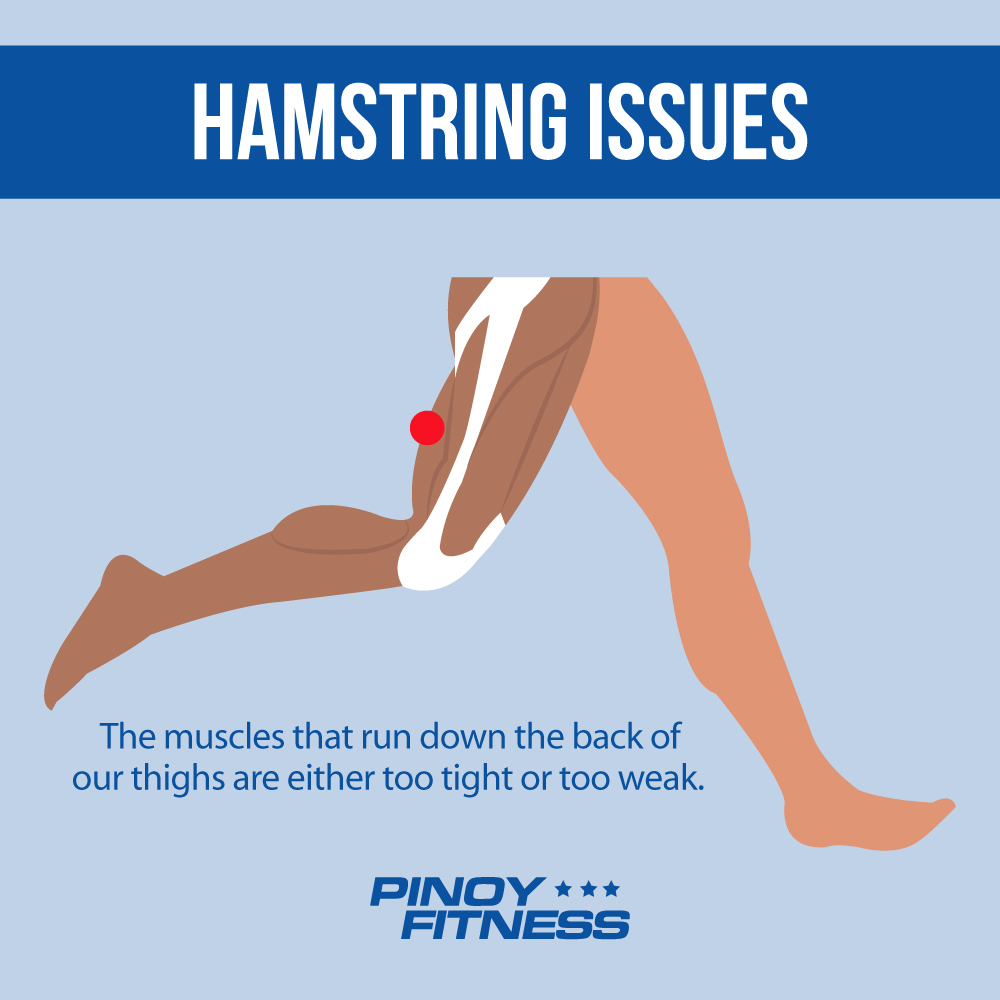
3. Hamstring Issues
What is it: The muscles that run down the back of our thighs are either too tight or too weak to bend knees, extend legs, or power uphill runs.
Stop if: You feel a sharp and sudden pain, and hear a snapping sound while running. If the pain is strong and the area bruises, it may take months before you can run again.
Treat it: Strengthen your hamstrings with one-legged deadlifts. Use a foam roller to loosen the muscles before and after a run. Cycling, pool running, and swimming are good alternative activities.
Avoid it: Keep muscles strong by doing bridges. Wearing compression tights during or after running can help improve blood circulation.

4. Plantar Fasciitis
What is it: Because feet absorb force that’s several times our body weight while running, tendons and ligaments along the heels and toes get torn or swollen. The pain, typically feels like a bruise along your arch or on the bottom of your heel.
Stop if: The pain in the arch of your foot doesn’t go away even after you’ve warmed up.
Treat it: Roll your foot over a frozen water bottle for 5 minutes, 5 times a day. Stretch your plantar fascia by sitting with one leg crossed over the other so that your right ankle rests on your left knee. Grab your right foot at the toes and gently pull back.
Use a foam roller to loosen calf muscles. It’s also important to strengthen your core with plank and back extension exercises.
If you’re suffering from Plantar Fasciitis, you’ll need three months to a year to recover. In the meantime, you can run in the pool or swim to keep the pressure off your feet.
Avoid it: Consult a podiatrist to make sure you’re wearing the right shoes for your foot type. Stretch and massage the plantar fascia several times a day. Hang your feet over the edge of the bed and roll your ankles, and do core exercises at least twice a week.
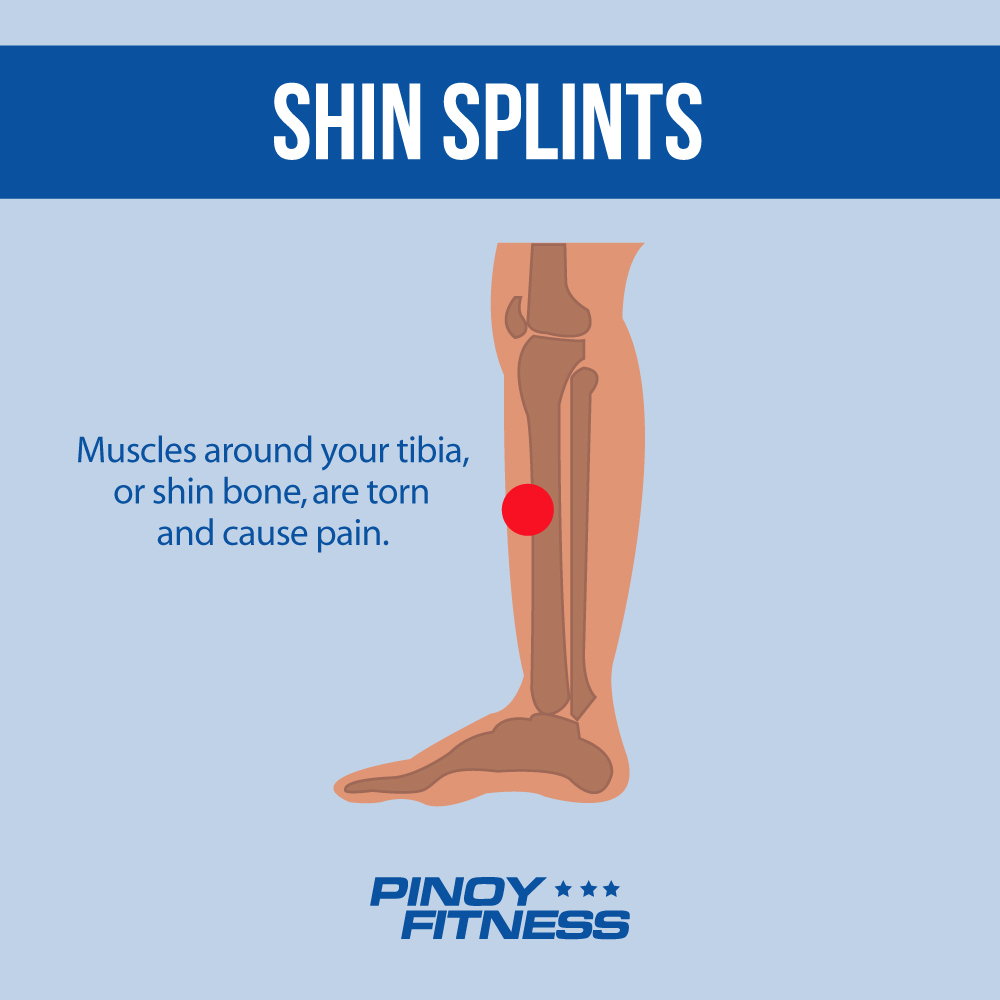
5. Shinsplints
What is it: Muscles around your tibia, or shin bone, are torn and cause pain.
Stop if: Your leg feels sore or tender especially when you hop or lean on it for support. Stop if it hurts to even walk; there could already be a fracture.
Treat it: A lot of rest, ice packs, and ibuprofen can ease the pain. Taping the shin or wearing an air cast ankle brace throughout the day can speed recovery. You can bike, run in the pool, and swim in the meantime.
Avoid it: If you’re a running newbie, increase mileage gradually and wear the right shoes. Ask for assistance at a specialty running shop.
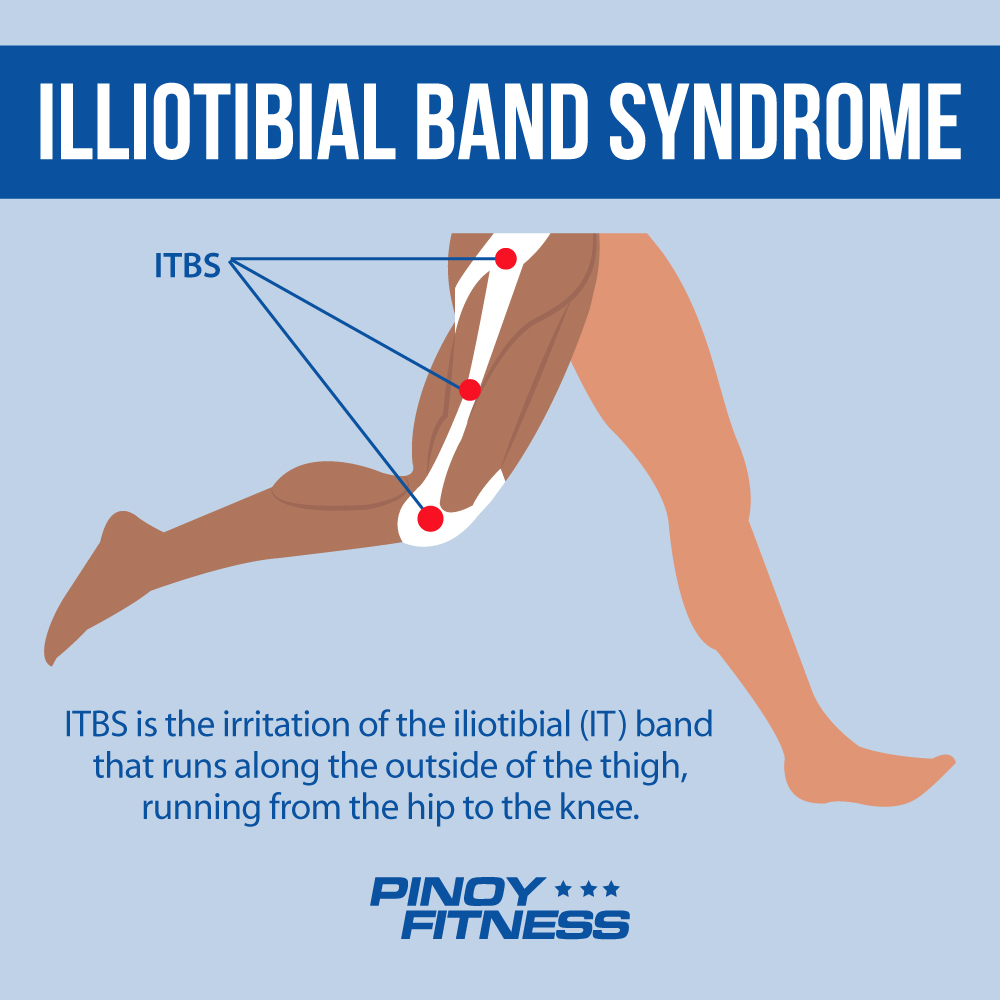
6. Iliotibial Band Syndrome (ITBS)
What is it: The iliotibial (IT) band is along the outside of the thigh, running from the hip to the knee. Increasing your running mileage quickly, long and frequent track workouts, and downhill running rub the IT band to the side of the femur, or thigh bone, and can cause irritation.
Stop if: There’s pain on the outside of the knee that shoots up and down your leg when going down a hill or stairs.
Treat it: Strengthen the hip abductors (which move legs to the sides) with lateral side steps, side leg lifts, and one-legged squats. Rest the outside of your thigh on top of a foam roller, and roll it from your knee to your hip. Do this before and after your run session.
Avoid it: Change directions every few laps while on a track, and don’t do hilly routes often. Shorten your stride to keep your weight on the front of the heel or the midfoot as you land.
7. Stress Fracture
What is it: Too much stress can fracture the shin, feet and heel bones.
Stop if: The pain increases as you run, or if just being on your feet is uncomfortable. Expect to take eight to 16 weeks off from running.
Treat it: Avoid high-impact exercises. Run in the pool and swim in the meantime.
Avoid it: Increase your mileage slowly. Strengthen bone density with weight training, and by getting enough calories and nutrients such as calcium.
Was this article helpful? Share it to a friend!
PF Online Community -> https://pinoy.fit/community
PF Online Shop -> https://store.pinoyfitness.com







Madalas sakin yang shin splints na yan…
same problem… :( sv nmn ng coach nmin sa shoes daw po yan tsaka landing ng paa…
Whoever posted this is a genius. Thanks…
Another must read San Dy. Ang galing nito U0001f60a
Itbs yata ang meron ako..thanks for posting!
Raji Shamaileh love tama ka sa shin splints
I have plantar fasciitis
That’s why i stopped running and jumping exercises.
Hehehe..i was about to tag you in this bunz! Xxxxxx
Ito ata yon:-(
Joni Runner’s knee
I used to suffer badly with shin splints, i was close to a stress fracture because I ran through the pain, stupid i know! i think with any running injury the key is education, invest time and money into learning about injuries and how to treat and prevent them, I did alot of research and came across great sites like https://howtostopshinsplints.com and what I learned allowed me to overcome my shin splints.
I think I have plantar fasciitis. Does this I mean i should stop and can’t run anymore?
Thanks for this!!
I have Plantar Fasciitis!
Its going to be part of our running career or whenever we put one footU0001f463ahead of the other; just pay respect to the word REST and you’ll be able to manage the pain.
Happy RunningU0001f45f and HNY!U0001f389
Great Info! Better to follow up to see Physical therapist and get recuperative exercises and stretches. All those listed are really nagging pains even for professional athletes.
I got one too.. My Doctor advised me to rest my feet from running. You can still run but gotta give your feet some rest and do aloooot of stretching.
Anyone who got Plantar Fasciitis? For more tips and advise regarding with PF there’s a group for runners with plantar fasciitis here on facebook, you can ask questions there with other members. Happy New Year :)
I have 3 out of 7. No running for now. I need a bike
What injury ang most na expirience ng mga runners?
Me, plantar fasciitis.
Thanks for the advice! I might go see a doctor too. :) Relieved na pwede pa rin tumakbo. :)
Anu pong name ng group?
Berlynn Mello Jed Paul Buenaventura
thank you honey kaso d naman sila sumasakit fortunately U0001f607
thats good :) at least we know if ever may sumakit on these parts
Irma Alerta-Carvajal…eto n yung maskit sakin…plantar fasciitis pla yun :(
Achilles tendonitis naman sa akin…hahhahaha
nku ganyan dn sa akin Achilles tendonitis magagamot pa kaya to
after warm compress cold compress
Hamstring and Achilles
Plantar Fasciitis, thats why I hate jumping exercises
Sir shin nga skin.
Parang halos lahat nararamdaman ko after ng jogging hehehe
itbs naman sa akin. Pahinga mo muna..exercise ka na lang this week..
Wala dyan.Tingin ko Nag aadjust lang ako from neutral ng mabahang panahon tapos ngayon stability daw ako. Haha.
Jay-ar Hernandez tingnan mo to, baka makatulong
Linti may ara ko tanan buh plantar kag runners knee gd na tam an…hahaha ty master
hay naku shin splints kelan ka kaya mawawala.. di na ko makatakbo ng malayo!
Pahinga muna tayo Chris V. Maglaque, sa letran na tayo let tumakbo hahahah sakit ng muscles ko sa hita, pero tingin ko normal lang kasi eto ung medyo masarap na sakit eh heheh baka mapwersa masyado pag magSprint 5k ulit tayo..
Siguro nga Irjohn. akalain mo na malaki pala pinagkaiba ng mga sapatos?hehe
Lloyd Lucas, shin splits.
Hahahaha alam n this
Pareho naten problema yan. Haha
Rezalyn Tuliao Yadao bka pwede sayo
Zhel Abadiano watch out
yeah right at the very start, I got this #1 runners knee :(
Wala naman Te :)
anong po magandang gawin sa runners knee?
Haha, nawala nga sakit sa tuhod sa iba naman lumipat Angelo. Kung hindi man mawala sakit. Target ko pa rin 6hrs.
Ok lang po ba na mag run muna tapos sa huli na yung stretching???
Order ID: #7538
Dear sir, i have been email to enquiry about the status of my order, but bo reply since one week ago. I very disappointed for your slow motion. Kindly reply me as soon as posible. Thank you
Rachelle, check this out friend ;)
I’ve experienced runner’s knee early on my running “career” and one thing i’ve learned on how to fix that problem is to improve your running form; seek a running coach or simply watch YouTube videos to improve your running. It also helps on the type of shoe you wear since there are different types of foot.
Then again i could be wrong. U0001f602U0001f602U0001f602 have a good day!U0001f60a
Anna Bianca Mendoza runner’s knee.
do barbell front squats. Make u and ur core,quads,butt and spinal erectors strong to avoid ruuners knee. For Plantar Fasciitis use a golf ball and roll it on ur feet it feels great!!
achilles tendonditis madalas :(
Bigkasin mo yung mahabang term! Haha.
Pag matagal akong napatigil..yung shin splints malimit sakin…
Yung knee ko .ko po kabang tumakbo ako namatagal sumasakit po .ano proper excersice? Po
is there any hope for my jumper’s knee? :( it’s been a month already. i miss running!
Parang lahat ata nakuha ko na…
Nico baka isa dito ung iyo
ITBS na lang hehehe
1 times n po ngyari sken yan..last yrs.. pero ngaun doblo ingat n ko.. tns pinoy fitness
She Ena san nga sau dito?
Nung una ung shin splits.. tapos ung plantar…..
Dude Charles Basa, eto yung sa akin – runner’s knee and archilles tendontitis.
meron akong shin splints na yan :(
Saaking EXPERIMENT kung tawagin, for 7months, nawala ang mga injury ko, just by majority running without SHOES :))
90% NO SHOES ( Basta no cushion, Hard af )
10% SHOES ( Events / Tempo )
Also I did not STRETCH before run or WARM UP before run…
For 7months wala po akong injury na naramdama only the
natural pain from running is natural ! :)
( I’m no elite runner, just slow distance runner )
( I do strength also since I do gym )
Pero hindi ko po sinasabi na same dapat tayo, atleast for some they can try ! it works for me so maybe it might work for others! Isa rin ”It’s Cheap” HAHAHA
Isa rin po akong nilamon ng injury last year pero now I can run for days ! :))) Mas makaka enjoy ng run